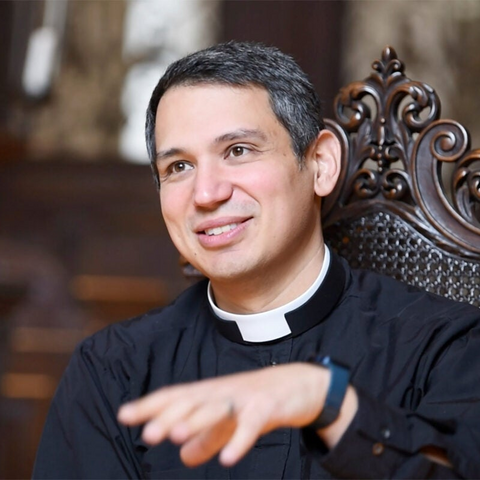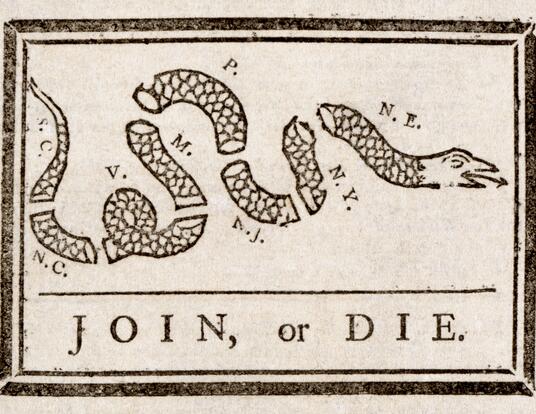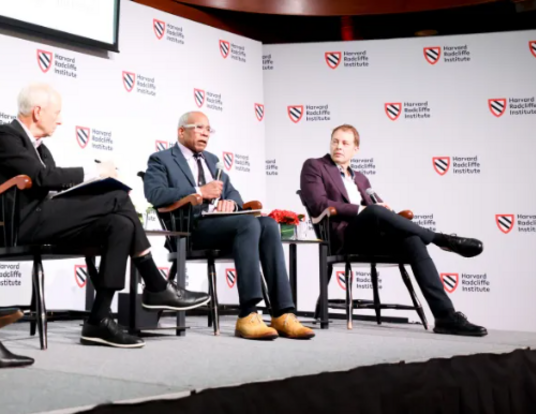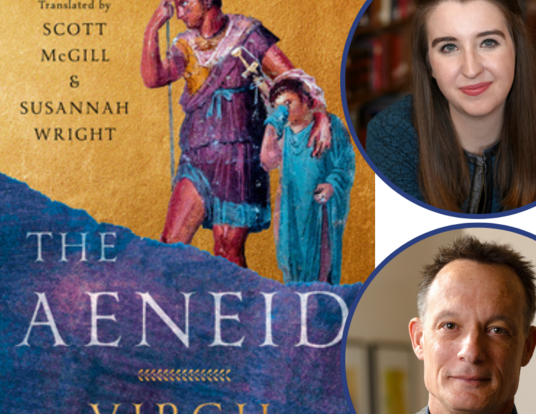Composing for the Spaces In-Between
Michele Cheng, PhD Student
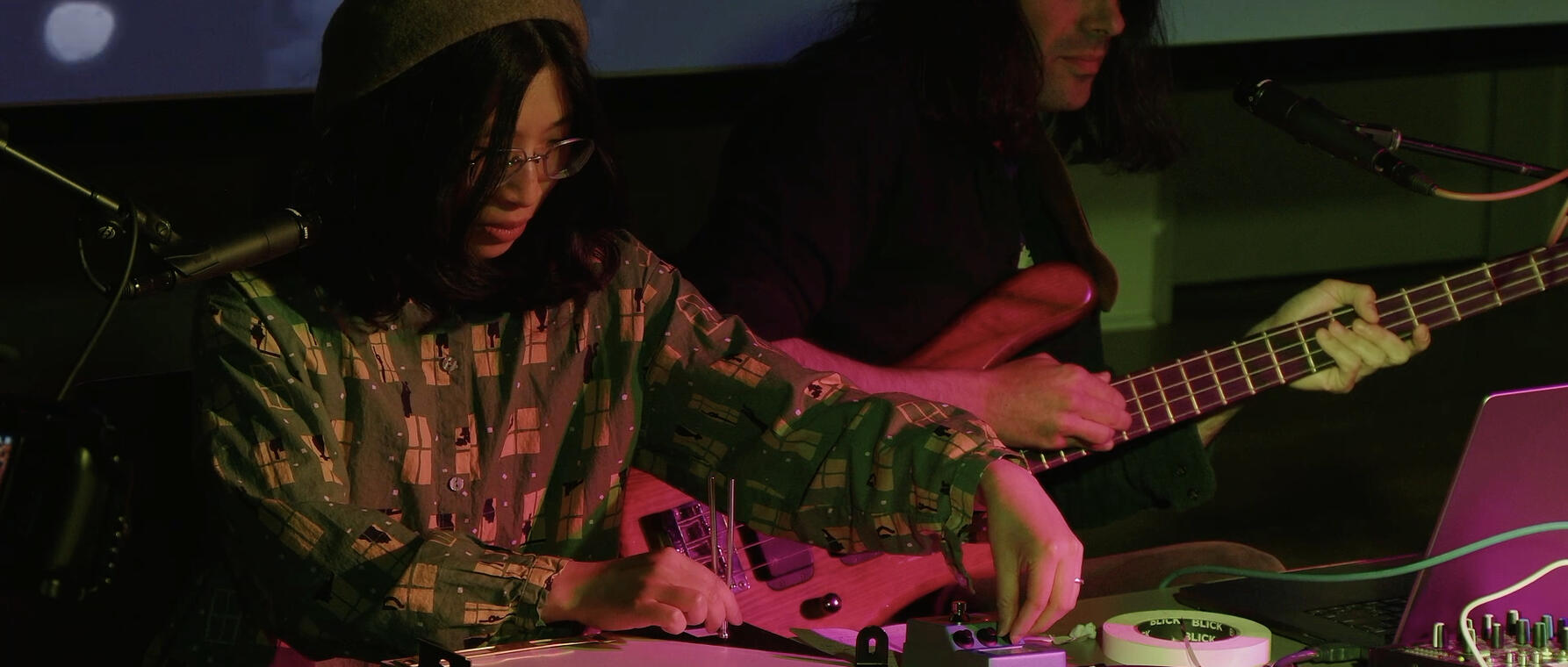
Michele Cheng is a second-year PhD student in music at Harvard Griffin GSAS. An interdisciplinary composer, improviser, multi-instrumentalist, and puppeteer, Cheng explores storytelling through sound, performance, and object theater. Her creative practice merges the whimsical and the profound, using humor, play, and metaphor to engage audiences with social issues and overlooked identities. Here, Cheng shares her journey from a rural university campus in Taiwan to Harvard, and how puppetry and underwater soundscapes help her give voice to the spaces in between.
To Ask Questions and Imagine Freely
I was born in Wisconsin, but I moved to Taiwan before I was two. My father had just finished his PhD in the US and taken a faculty job at National Yunlin University of Science and Technology, located in one of the most underdeveloped counties on Taiwan’s west coast. I grew up on the university campus, surrounded by nature and a rich sense of intellectual curiosity. My parents encouraged me to ask questions and to imagine freely.
I started to improvise and compose music by myself when I was six or seven on a keyboard. As a kid I memorized what I improvised and sometimes created my own notation. Rather than sending me to a conservatory or a standardized music program, my mom and my piano teacher (I started learning piano when I was eight) supported me by letting me explore musical creation freely.
Home and school felt like two different worlds. At home, I was nurtured to think critically and dream creatively. At school, I navigated a rigid system that didn’t always suit my learning style. I was never the top student—I struggled with standardized tests—but I was always inventing stories, doodling, and writing music in the margins of my notebooks. In retrospect, those early experiences helped me understand how to move between different cultural and intellectual environments. They taught me how to notice the voices that often go unheard.
My mom and piano teacher documented my improv on cassette tapes and later bought me a digital audio workstation (DAW). I remembered the excitement of my teacher when she showed me the DAW. "I don't know much about this, but I think it would help further express and expand what you want to do," she said. She would let me come over to record whenever I had ideas.
At 16, I won a digital music competition by the Industrial Technology Research Institute in Taiwan and was sent to visit Austria’s Prix Ars Electronica. The event changed my life (also my dad's attitude towards my creative activities. He supports what I do but had been voicing reservation about me "not fully focusing on school standard disciplines" until this happened), and I decided to go to college as a music major where I wrote songs, film scores, experimental works, and played in rock bands.
Story Time
I studied music composition and production at National Sun Yat-sen University in Kaohsiung, a harbor city in southern Taiwan. It was the first in the country to offer a program that encourages any kind of musical creations regardless of genres, styles, and mediums. The literal translation of the program is "Creativity and Application."
Later, I moved to California and earned a master’s in Integrated Composition, Improvisation, and Technology at UC Irvine—a rare program that combines performance, composition, and music technology.
While freelancing in California, I worked as an elementary school teacher and a museum specialist. That’s where I first encountered puppetry. One day, I was handed a box of puppets and told, “You’re leading story time.” I had no idea what I was doing—but I loved it immediately.
Puppetry seemed like a playful, even childlike medium, but I quickly realized its power. It creates a kind of safe distance, one that allows audiences to engage with complex or emotionally heavy material without shutting down. I thought: why not use this in work for adults?
I began incorporating puppetry into my compositions—works that explore themes like racial identity, self-image, and cultural belonging. It’s been an unexpected but deeply meaningful evolution in my artistic practice.
Speed Dating with an Evil Squirrel
One of my first major works using puppetry was a piece called Speed Dating. It explores the self-image of Asian Americans through the lens of online dating culture. I interviewed friends, gathered stories, and read articles about how Asian Americans see themselves—and how those perceptions are shaped by digital interactions.
The work features fictional characters based on real experiences and includes a puppet narrator: a squirrel. I called it the “evil squirrel” because it looks cute and harmless, but says the most cutting, often discriminatory things—lines drawn from real-world microaggressions and stereotypes.
Some of the material is uncomfortable. But the puppet makes it bearable. Audiences can laugh and engage, even as they’re confronted with difficult truths. I’ve seen it work. I once performed Speed Dating in Northern Ireland. During the performance, an American audience member looked visibly confused—shifting in his seat, arms crossed, unsure what to make of it. But he didn’t disengage. He stayed with the piece. He laughed. And when he left, I could see the wheels turning. That’s what I hope for—not applause, but reflection.
A Place for Wildcards
Before Harvard, I struggled to find an academic home that fit me. I looked into performance studies, interdisciplinary humanities, even journalism. My background was too varied for traditional music programs. I’m not just a composer—I build instruments, I improvise, I perform, I write, I teach, I work with puppets. Where did I belong?
I found my answer in Harvard’s PhD program in Creative Practice and Critical Inquiry. It’s small—just one or two students admitted each year—and it welcomes “wildcards” like me. My cohort includes musicians who write, perform, experiment, and think deeply about what music is and what it can do.
We’re encouraged to cross boundaries. I take puppetry classes in Harvard’s Theater, Dance, and Media program. I build large-scale masks. I write academic articles and immersive performances. I’m working on a journal piece, soon to be published by MIT Press, that explores improvisation and fluidity across media. It’s based on a performance I staged using live music, green screen video, and a puppet inspired by a Taiwanese Indigenous folk tale. The figure led audiences—like the ancestral deer in the story—through layers of projected reality. In the performance space, we created an underwater world.
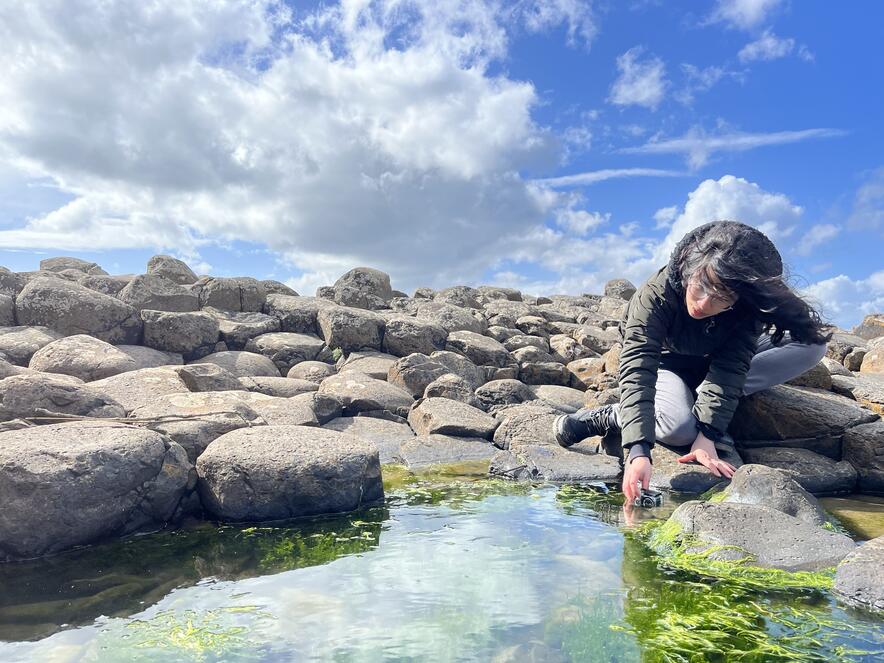
Listening Underwater
Lately, I’ve been drawn to underwater soundscapes. I collect field recordings from lakes and rivers and experiment with submerged listening. To me, underwater is a metaphor for the in-between. It’s a space where we can’t breathe, but also one we can’t live without. Listening beneath the surface lets me hear the dialects of water—the subtle variations, the quiet complexity.
So much of my work is about that in-between space—between cultures, identities, disciplines. I identify as a 1.5-generation Asian American. I’ve lived between languages, between geographies, between academic structures. That’s where I find the most interesting questions—and the most overlooked stories.
Inviting Empathy, Reflection, and Connections
One of the lessons I’ve learned at Harvard is about language—specifically, academic language. There’s a tendency in the academy to rely on jargon, to speak in terms only insiders understand. In one conversation with a faculty mentor, I was tossing around terms like “Afrofuturism” and “Afro-Asia.” And they said, “That sounds very academic.”
That stayed with me. I want my work to be rigorous, but also accessible. I want my mom and my grandmothers to understand it, to feel something when they watch or listen—even if they don’t know the theory behind it.
That’s what puppetry taught me. A puppet is a blank figure. Audiences project themselves onto it. They find their own stories in its gestures. I want my music to do that, too—to invite empathy, reflection, connection.
Because in a world that increasingly demands extremes, I want to make space for the in-between.
Get the Latest Updates
Join Our Newsletter
Subscribe to Colloquy Podcast
Simplecast


